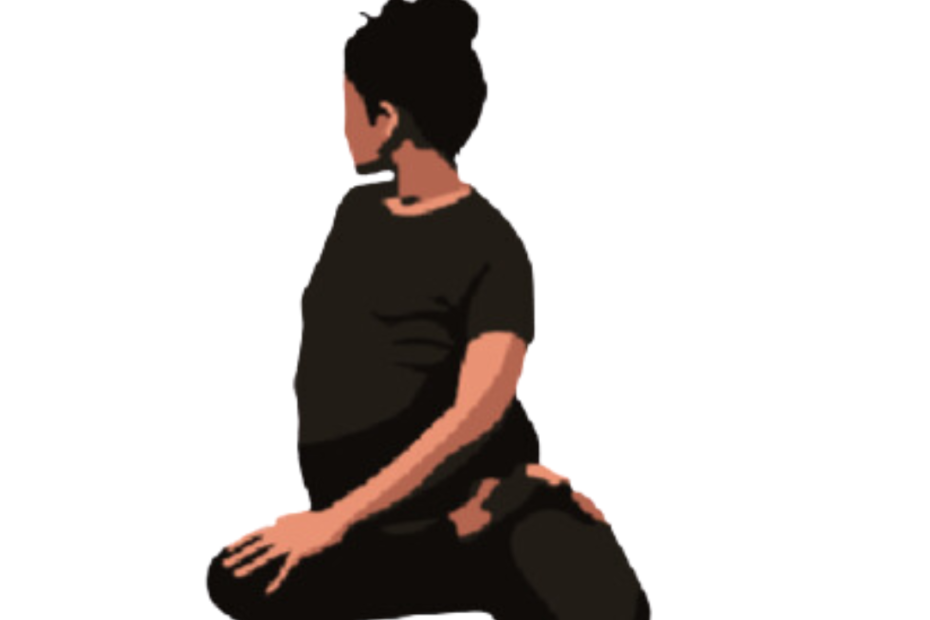Standing Poses During Second Trimester (Mid Pregnancy) -16 to 34 weeks
Standing postures are excellent during pregnancy, as they help align your body and foster a deeper connection with the earth, bringing a natural sense of balance and stability, also lenghthens ur spine and opens up your pelvis.
A key element of these postures is foot placement. Start by spreading your feet wide and grounding them firmly. As you connect with the ground, imagine gravity pulling you down gently, much like the roots of a tree. This firm foundation in your feet allows the larger muscles in your legs to relax, setting off a chain reaction that travels upward through your entire body, releasing tension up to the neck.
As your muscles relax, your bones begin to feel supported by gravity, helping your body find its natural alignment. The pelvis, in particular, draws downwards, grounding your spine and helping you feel more physically and emotionally stable. As this alignment takes place, tension in the upper body—especially in the chest, shoulders, and neck—starts to ease. As your body finds balance along the spine, postural issues diminish, and a sense of grace and lightness in movement emerges.
By practicing standing postures regularly, you’ll rediscover how to move with ease and grace, relieving minor aches and pains as your body adjusts naturally.
Even if you practice just a few basic standing poses regularly, you’ll soon feel a surge of energy, confidence, and vitality. You’ll find yourself more grounded and calm—skills that are useful at any time, but especially during labor. Standing in connection with the earth also helps you be more mindful of your presence.
Caution: Avoid performing standing poses if there are signs of high blood pressure or if you are experiencing significant physical fatigue. And plz practice under an experienced prenatal yoga teacher.
During pregnancy, it’s best to limit yourself to one or two standing postures per session, as overdoing it may be counterproductive. Take your time to explore each pose deeply and adjust your practice based on your own needs.
It’s common for some women to experience dizziness when standing for extended periods, due to changes in blood circulation during pregnancy. If this occurs, don’t worry—just avoid standing postures or only do them for short periods, and take time to sit or lie down to rest afterward.
Triangle Pose/Utthita Trikonasana
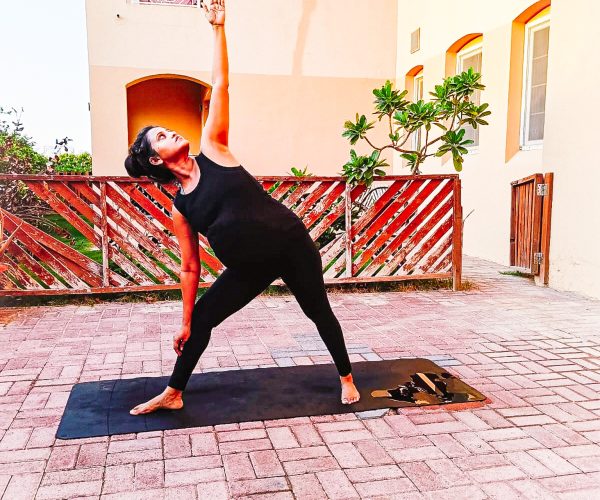
For those who are new to yoga or practicing yoga for the first time during pregnancy:
if the palm cannot reach the ankle, or if the side of the pelvis gets compressed while reaching down, keep your palms on the shin bone as shown in the image.
Do not hold your breath during any movement. Breathing is very important—please remember, if you breathe, your baby gets oxygen.
Stay in the posture for a count of 5 or up to 15 to 20 seconds. If you feel out of breath, come out of the posture immediately. This applies to all asanas..
Extended Side Angle Pose/Parsvakonasana
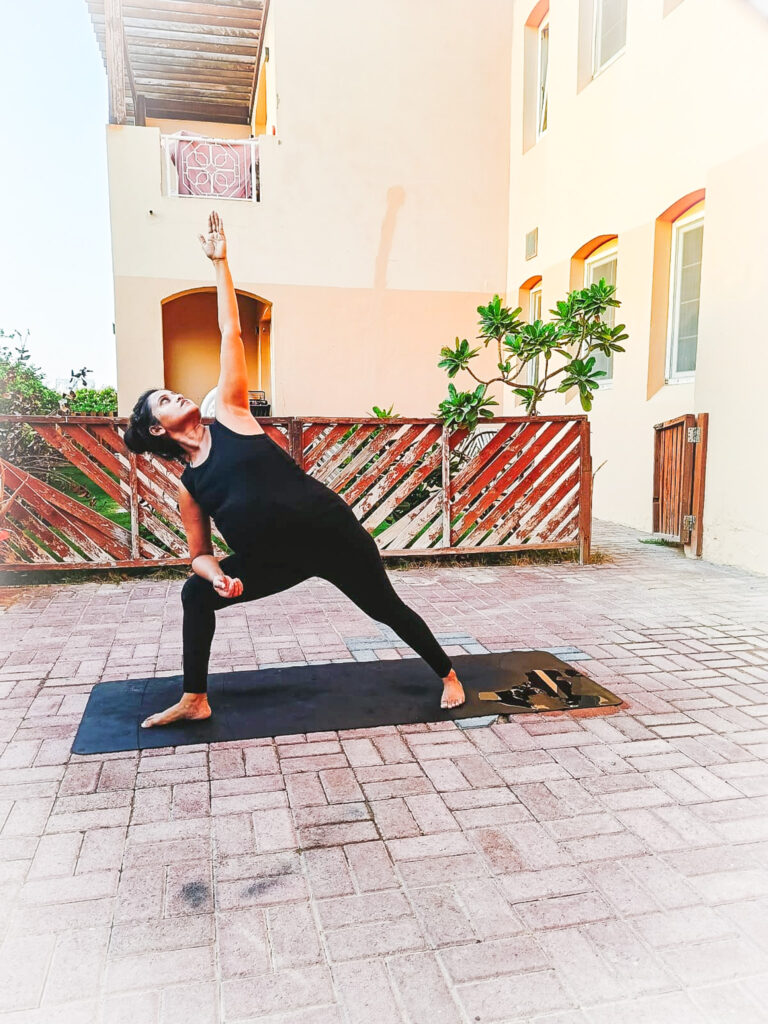
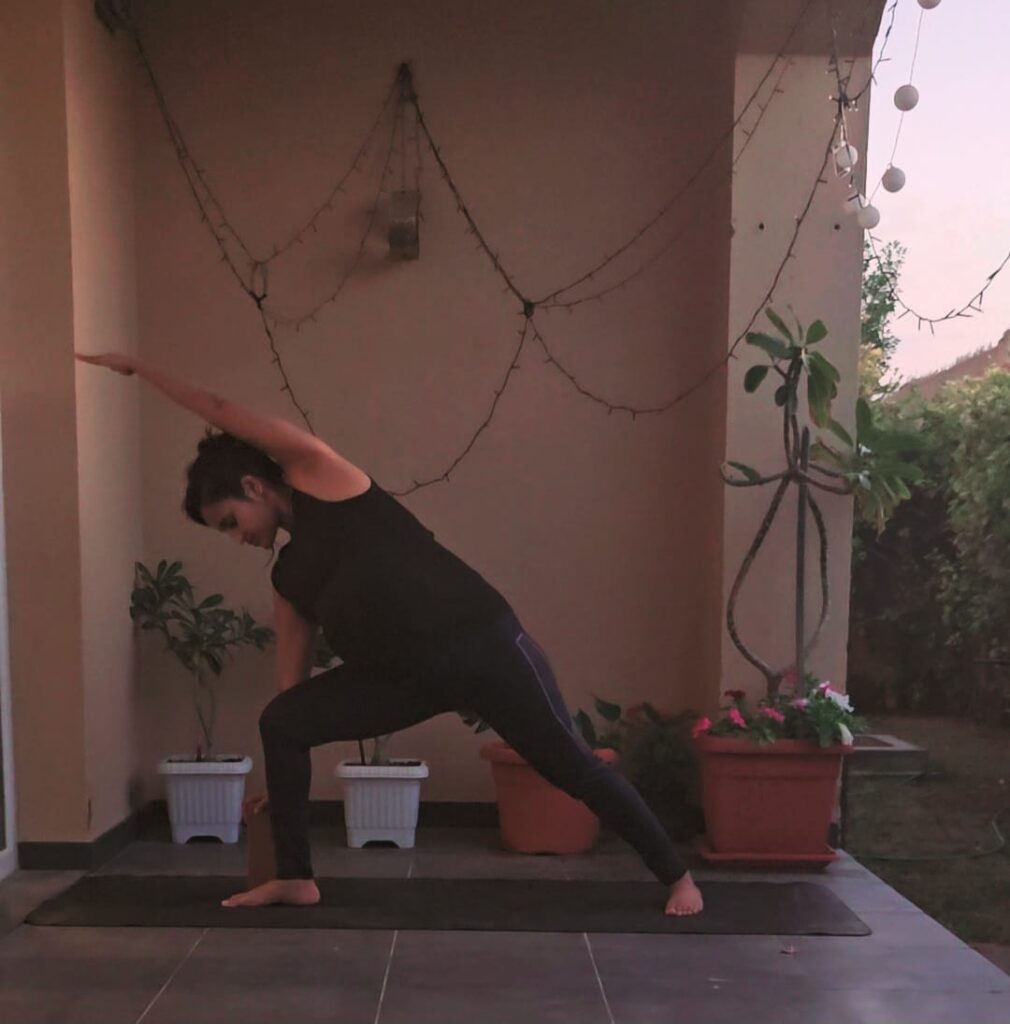
For those who have practiced Parsvakonasana before, placing their hands on the floor may be easy. However, if your hand doesn’t reach the floor, you can rest your forearm on your thigh or use a block(as you can see the second image ) to support your palm.
Ensure that the left side of the pelvis and abdomen does not press against the thigh, as the baby is there.
Lift your chest to create space for proper breathing. Stay in the posture for a count of 5 or up to 15 to 20 seconds, breathing normally.
Pyramid Pose/Parsvottanasana
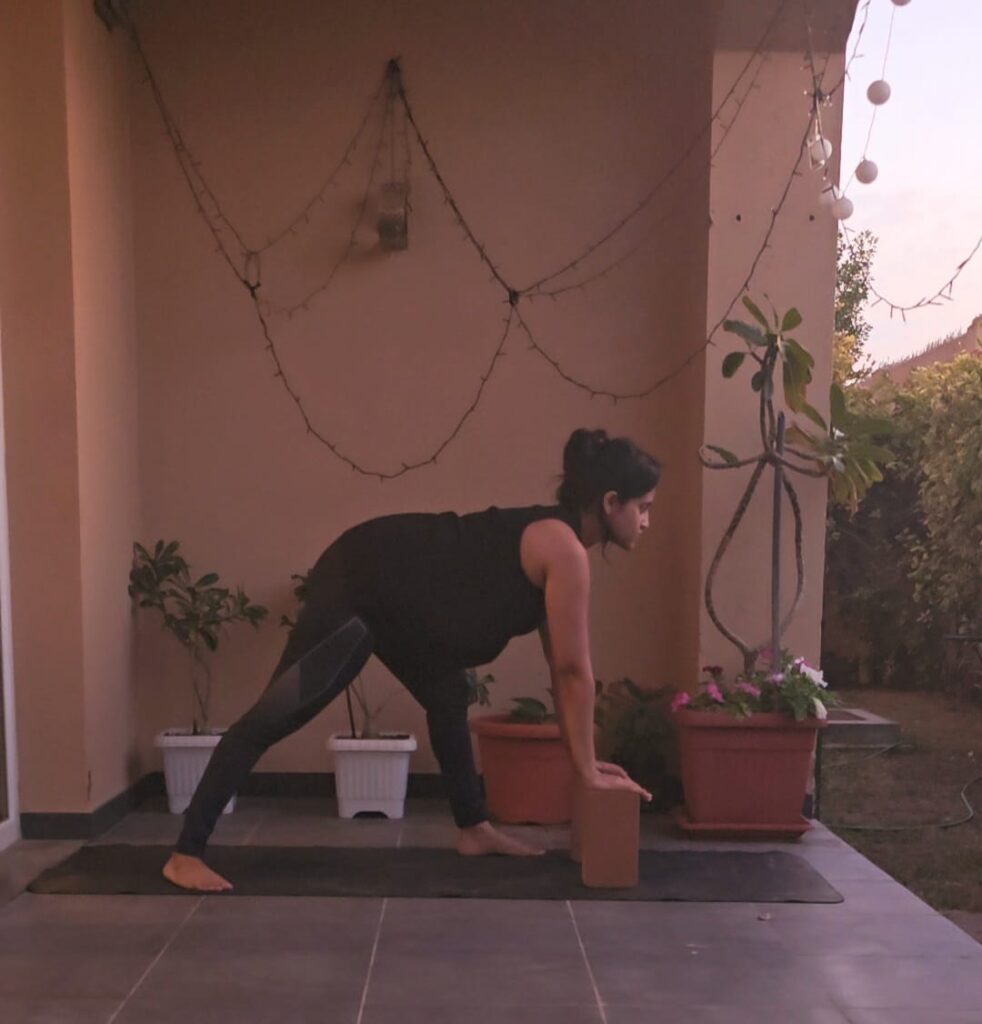
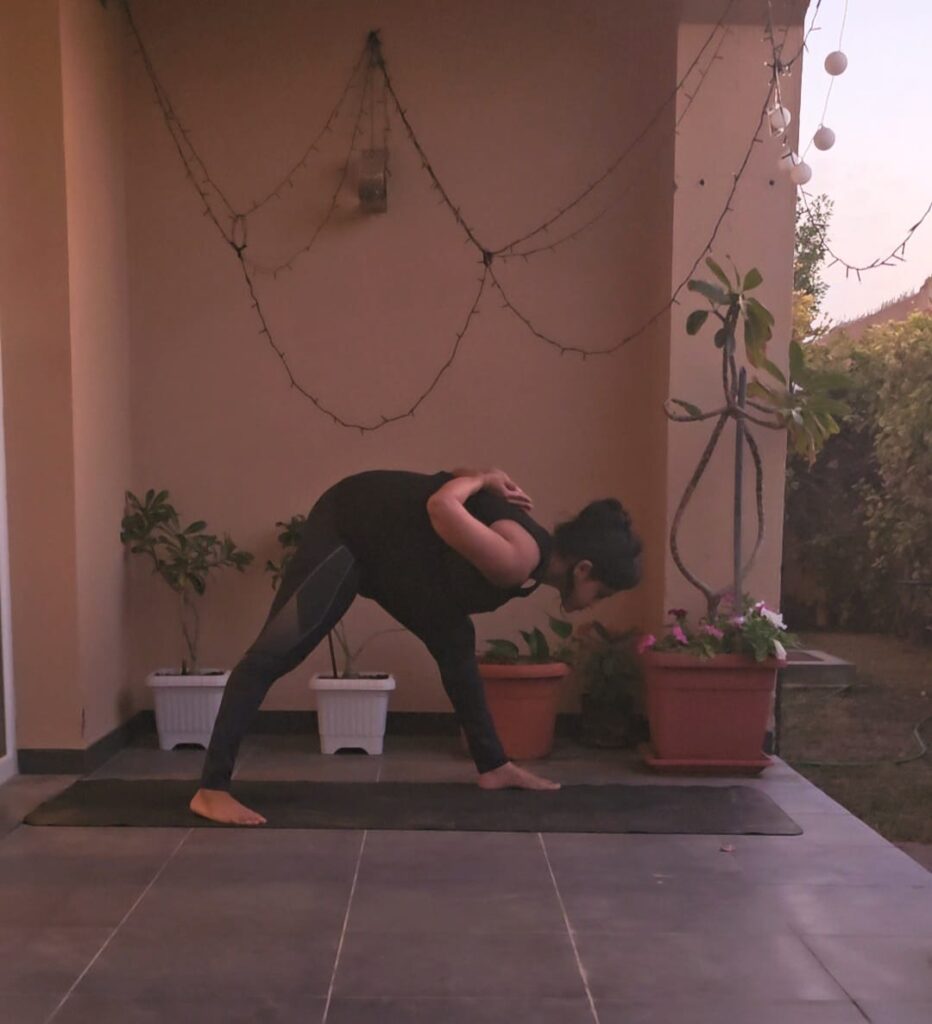
In this posture, keep your feet mat-distance apart to create enough space for the abdomen.
Ensure that you do not compress your abdomen agaianst the thigh..
Avoid rounding your upper body; instead, keep your chest lifted to prevent any pressure on the abdomen. Look ahead of you. Aim to create a slight concave shape in your spine.
Stay in the posture for a count of 5 or up to 15 to 20 seconds, breathing normally.
Warrior Pose/Virabhadrasana 1
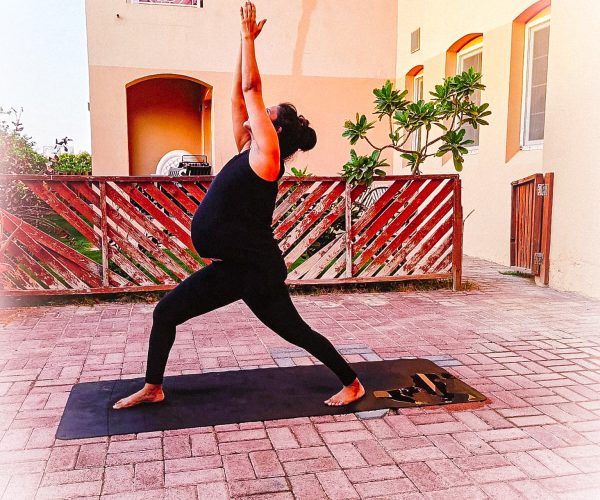
If you’re finding it hard to bend the front knee to a 90° angle , bend how much you can and do not press the abdomen against the thigh
If your breathing feels heavy, avoid lifting your head upward. Instead, gaze forward, and consider keeping your palms apart rather than joined together. This helps reduce pressure on the chest and minimizes strain.
Lengthen your spine upwards to prevent unnecessary pressure on the uterus.
If the pose feels challenging in terms of breath control, limit your hold to 10 seconds or less.
People with high blood pressure or a predisposition to it should refrain from practicing this pose.
Warrior Pose 2/Virabhadrasana 2
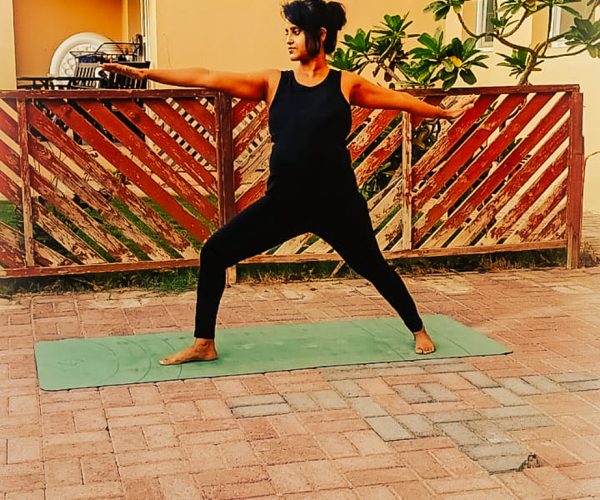
If you’re finding it hard to bend the front knee to a 90° angle , bend how much you feel comfortable.
This posture opens the pelvis sideways, and gives the baby more room to move.
Wide Stance Forward Bend/Prasarita Padottanasana

In this posture, keep your knees slightly bent and focus on lengthening your spine, maintaining a concave shape in your back to ensure there is ample space for the baby to breathe.
Place your palms on a block to support your back and allow for proper extension of the spine. This will prevent your abdomen from being compressed against the thighs.
Half Moon Pose/Ardha Chandrasana
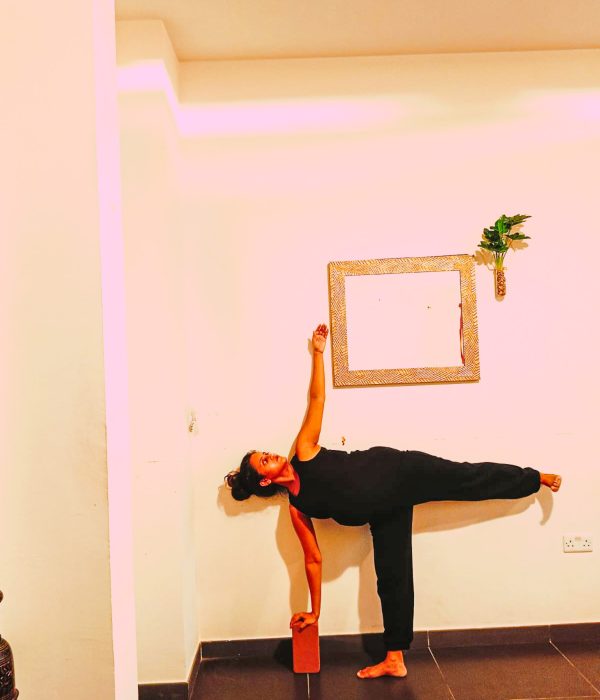
Here is the corrected and improved version of your text:
If you are practicing yoga for the first time during pregnancy or returning after a long break, please use a wall and a block for support in this posture, as shown in the image.
This setup provides support for your back, helps widen your pelvis, and makes breathing easier for both you and your baby.
This posture widens the pelvis, facilitates easier breathing for the mother, and creates more room for the fetus.
Chair Pose
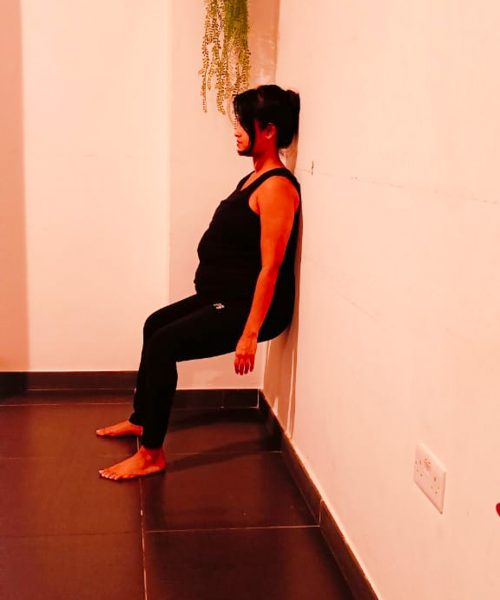
Chair Pose (Utkatasana) is a powerful yoga posture that strengthens your thighs and core muscles. This pose is particularly beneficial during pregnancy, as building strength can be useful if you choose to squat during childbirth.
While practicing Chair Pose, it’s essential to keep your jaws, arms, and shoulders relaxed. Focus your awareness on your lower back and observe which parts of your spine are touching the wall. Keep your pelvis tucked in so that your lower back makes contact with the wall. This allows you to experience how your spine feels when extended, as the lower back curve tends to increase during pregnancy due to the baby’s weight.
These types of postures not only strengthen your spine but also help maintain alignment, providing relief from lower back pain.
At first, you may feel a burning sensation in your thighs, especially if you’re new to the pose. However, with consistent practice for 10-15 seconds every other day, you’ll gradually strengthen both your core and thigh muscles. Regular practice will make a noticeable difference in your stability and overall strength
Tree Pose
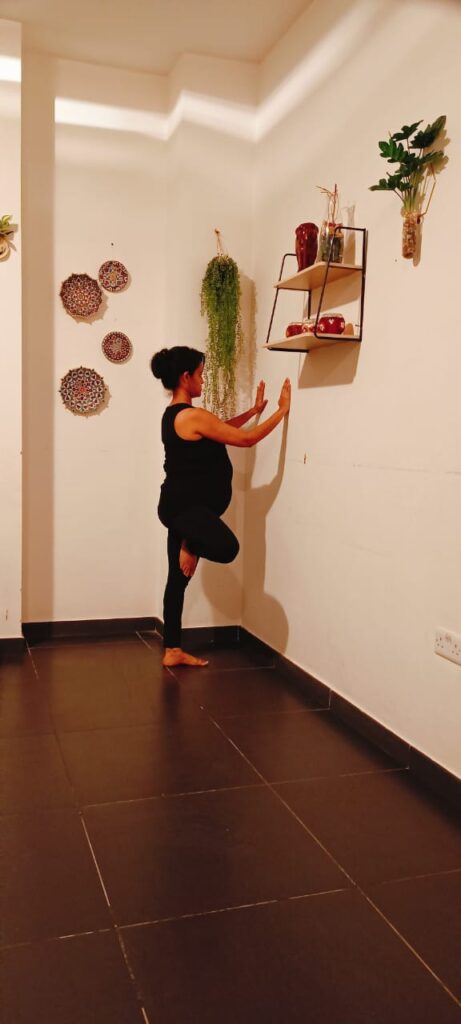
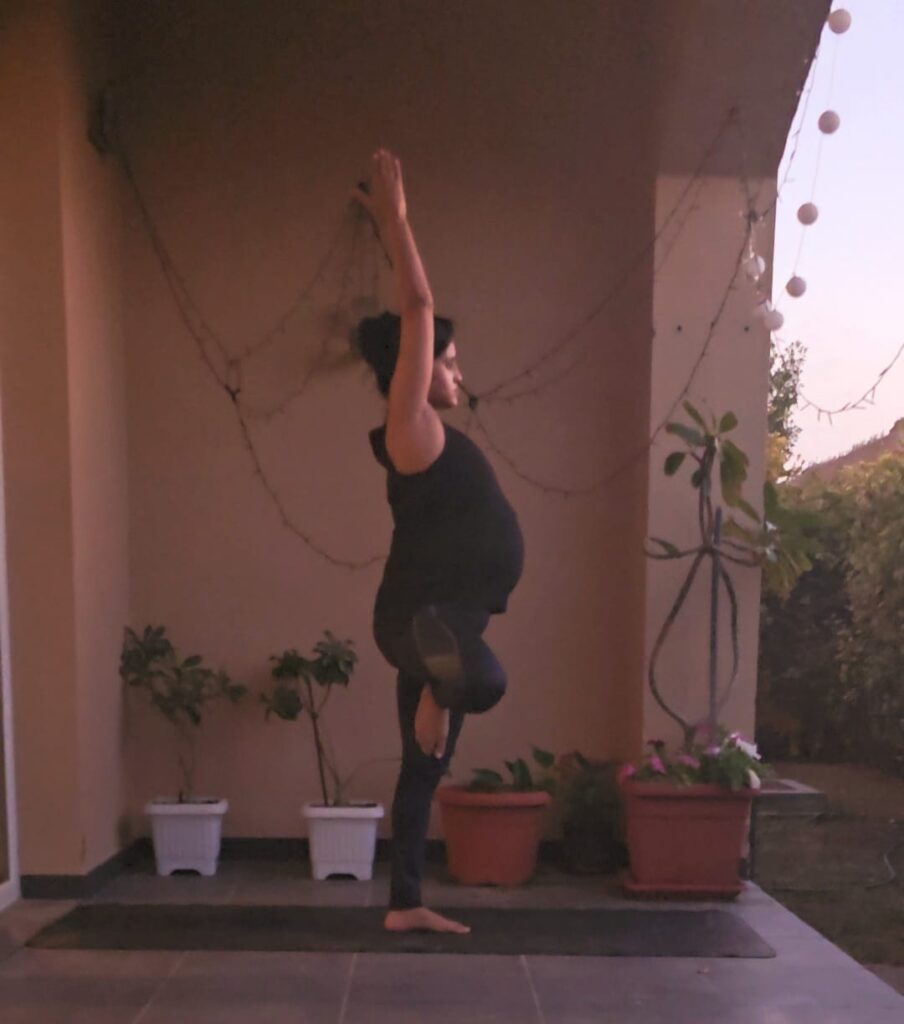
Tree Pose helps open up your pelvis and strengthens your legs. If you are familiar with this pose, you can practice it without the support of a wall. However, if you are still working on your balance, using the wall is beneficial.
An important point to note is that due to hip tightness, it may be difficult to lift the bent leg high up to the inner thigh of the standing leg. In that case, place your foot either below the knee or above it, but never directly on the knee to avoid strain on the knee joint.
In the image, the lady is facing the wall, but there are other variations of Tree Pose, which I will share in upcoming posts. Most importantly, remember to keep breathing. If you know how to engage your core, do so, but if not, it’s okay—keep ur chest lifted and try to reduce the curve at lower back .
Standing Twists
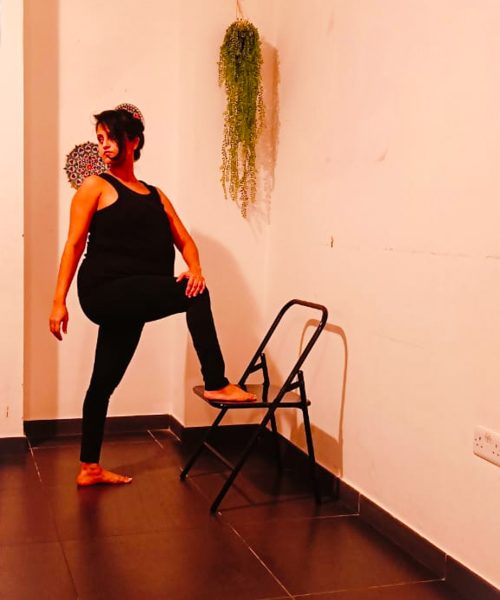
This twist has similar benefit as twist. Try not to compress your abdomen against the thigh. Concentrate on twisting your upperback so that muscles around the shoulders feel released.
Conclusion
In addition to standing postures, there are other beneficial yoga poses to practice during pregnancy, including a combination of standing, sitting, and other supportive positions. These asanas work together to promote flexibility, strength, and relaxation throughout your pregnancy. Be sure to check back on my blog regularly, as I’ll be sharing more yoga tips and detailed guides for a healthy and balanced pregnancy journey.
According to Geeta S. Iyengar’s Yoga: A Gem for Women, practicing these āsanas helps keep your joints mobile, enhances pelvic flexibility, and improves breathing. They can effectively alleviate body tightness, backaches, and feelings of heaviness in the abdomen. Asanas such as Ardha Chandrāsana, Pārsvottānāsana, and Prasārita Pādottānāsana are especially beneficial for relieving morning sickness during pregnancy.
